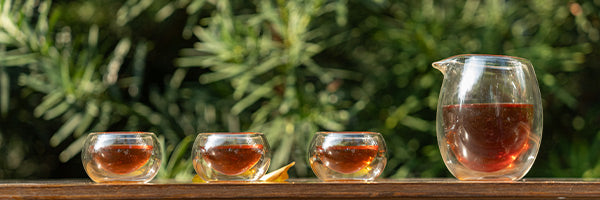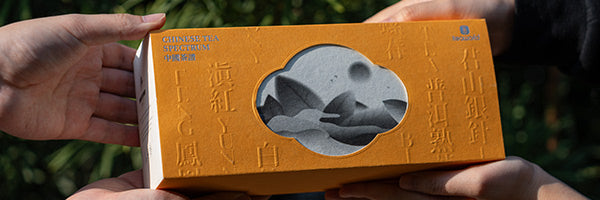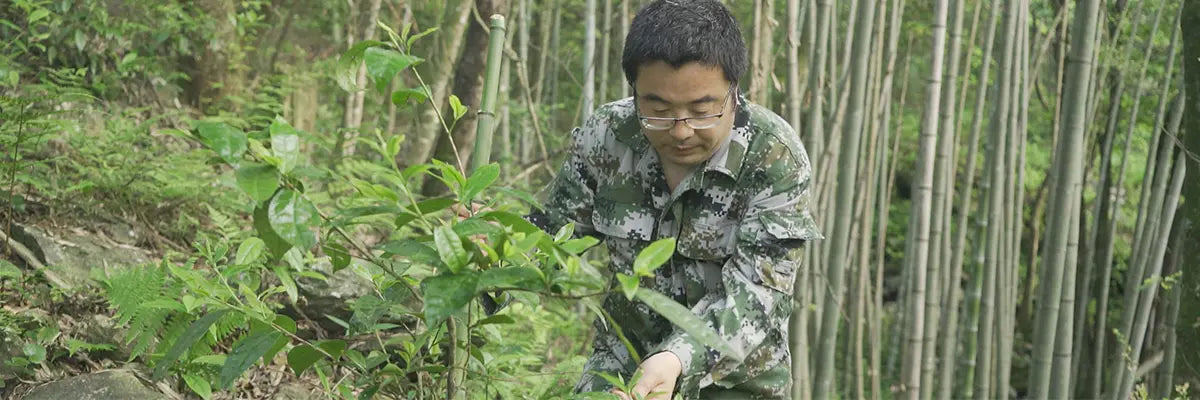История выращивания чайных деревьев в Китае насчитывает более двух тысяч лет, а разнообразие китайского чая невероятно богато, включая зеленый чай, черный чай, улун, белый чай, желтый чай, черный чай и различные специальные категории, такие как цветочный чай. Эти чаи популярны не только в Китае, но и имеют широкий круг поклонников по всему миру.
О пробнике листового чая
Когда люди начинают узнавать о китайском чае, они могут чувствовать себя ошеломленными. С таким количеством видов чая и значительной разницей в ценах, с чего начать? Вот где в игру вступают пробники китайского листового чая . Имея всего одну коробку чая, вы можете изучить множество профессиональных и разнообразных вариантов, связанных с определенными категориями чая, такими как чай улун.
Пробники китайского листового чая бывают разных типов, включая пробники зеленого чая, пробники чая улун и пробники цветочного чая и т. д. Эти пробники чая выбираются на основе профессиональных стандартов чая, представляя самые классические сорта чая, предоставляя при этом богатые знания о чае, руководство по завариванию и другую информацию, чтобы легко исследовать мир китайского чая. Если вы хотите сделать подарок друзьям и семье, пробники листового чая также являются отличными подарочными наборами для чая — вкусными и полезными.
Чтобы по-настоящему открыть для себя красоту китайского чая, лучше всего попробовать его лично. На практике вы обнаружите, что различные сорта листового чая требуют определенных методов заваривания для раскрытия наилучших вкусов. Теперь давайте рассмотрим методы заваривания различных листовых чаев.
Метод заваривания листового зеленого чая

Ключ к завариванию листового зеленого чая — не допустить повреждения свежести чайных листьев в процессе заваривания. Некоторые зеленые чаи, такие как чай Билуочунь и Лунцзин, являются одними из лучших листовых чаев в Китае, известных своим освежающим вкусом и ярким зеленым цветом.
Заваривание при слишком высокой температуре воды может привести к разрушению таких веществ, как витамин С и полифенолы, что приведет к снижению свежести и потемнению цвета.
Сосуд для заваривания: стеклянная чашка
Температура воды: 80-90°C
Количество чая: 3 г
Соотношение чая и воды: 1:50
Техника заваривания:
Если вам сложно контролировать определенную температуру, вы можете дать воде постоять около 5 минут после закипания, чтобы достичь желаемой температуры 80–90 °C.
Когда наливаете воду, делайте это вдоль внутренней стенки чашки, чтобы избежать прямого контакта с чайными листьями. Позвольте воде постепенно проникать в чайные листья, позволяя им естественным образом разворачиваться и медленно высвобождать свои вещества.
Найдите больше листового зеленого чая в нашем Green Tea Sampler.>>>
Метод заваривания листового белого чая

При заваривании листового белого чая важно обращать внимание на нежность чайных листьев.
Среди них Silver Needle и премиум White Peony имеют высокую нежность, а обычный White Peony и Shou Mei имеют более низкую нежность. Белые чаи с разной степенью нежности имеют некоторые различия в способах заваривания.
Сосуд для заваривания: гайвань, чайник из фиолетовой глины
Температура воды: 90°C (высокая нежность) / 100°C (низкая нежность)
Количество чая: 3-5 г
Соотношение чая и воды: 1:35
Техника заваривания:
Для белых чаев с высокой нежностью главное — заварить сладкий вкус, поэтому температура воды не должна быть слишком высокой. Время заваривания также может быть относительно коротким, каждое заваривание длится около 30 секунд.
Для белых чаев с низкой нежностью их можно не только заваривать кипятком, но и кипятить. После заваривания заварки кипятком около 5 раз, можно переложить листья в чайник для кипячения, полностью используя потенциал заварки.
Метод заваривания листового желтого чая

Заваривание листового желтого чая, как и зеленого, требует поддержания умеренной температуры воды.
Сосуд для заваривания: стеклянная чашка
Температура воды: 80-90°C
Количество чая: 3 г
Соотношение чая и воды: 1:50
Техника заваривания:
Листовой желтый чай — это слабоокисленный чай с нежными листьями, и использование воды слишком высокой температуры может ошпарить листья. Поэтому не рекомендуется заваривать его кипятком.
Оптимальное время заваривания для первого заваривания листового желтого чая составляет 30 секунд, для второго заваривания оно увеличивается до 60 секунд, а для третьего заваривания увеличивается примерно до 2 минут. Такое заваривание усиливает вкус чайного настоя.
Метод заваривания листового чая улун

Главное при заваривании листового чая улун — раскрыть его сильный аромат и очарование.
Сосуд для заваривания: гайвань, чайник из фиолетовой глины
Температура воды: 95-100°C
Количество чая: 5г~8г
Соотношение чая и воды: 1:25
Техника заваривания:
Температура воды для заваривания чая улун должна быть немного выше, чтобы полностью раскрыть его аромат.
Для чая улун, например, чая в форме полосок с одним пучком и чая в форме камней, главное — заваривать его в течение короткого времени, что позволяет ему мгновенно высвободить свои вкусы. Однако для чая улун в форме гранул время заваривания может быть немного больше.
Найдите больше листового чая улун с помощью нашего пробника чая улун.>>>
Метод заваривания листового черного чая

При заваривании листового черного чая важно не заваривать его слишком долго, так как это может привести к появлению кислого или вяжущего привкуса.
Черный чай полностью окисляется, и неправильное заваривание может легко привести к появлению кислого или даже горького привкуса.
Сосуд для заваривания: Гайвань
Температура воды: 90°C
Количество чая: 3-5 г
Соотношение чая и воды: 1:35
Техника заваривания:
Избегайте слишком долгого заваривания черного чая; быстрое выливание чая после добавления воды даст чашку прозрачного, сладкого и освежающего черного чая. Гайвань должна иметь широкое горлышко для эффективного рассеивания тепла и аэрации.
Используйте немного меньшее количество чайных листьев, чтобы обеспечить им достаточно места для дыхания и не допустить слишком плотного заваривания чая.
Вылейте чай полностью, избегая длительного контакта воды с чайными листьями. После того, как вылили чай, откройте крышку гайвани, чтобы обеспечить рассеивание тепла.
Найдите больше листового черного чая в нашем пробнике черного чая.>>>
Метод заваривания листового темного чая

Перед завариванием листового темного чая рекомендуется провести «пробуждение чая», чтобы привести чайные листья в лучшее состояние и добиться превосходного вкуса.
Сосуд для заваривания: гайвань, чайник из фиолетовой глины
Температура воды: 100°C
Количество чая: 5г-8г
Соотношение чая и воды: 1:25
Техника заваривания:
Вещества в листовом темном чае растворяются медленно, требуя более высокой температуры воды и тепла во время заваривания. Чтобы улучшить состояние и вкус чайных листьев, предлагается сначала провести «пробуждение чая», осторожно замочив их в теплой воде перед использованием кипятка для заваривания.
При заваривании темного чая наливайте воду аккуратно, обычно выбирая технику медленной заливки, поддерживая стабильную интенсивность заваривания на протяжении всего процесса.
В Китае существуют тысячи видов чая, и китайцы делят чай на шесть основных типов. Это черный чай, улун, зеленый чай, желтый чай, черный чай и белый чай.
Часто мы не можем сказать, какой чай нам действительно нравится. Часто нам приходится выбирать из этих шести видов чая, чтобы найти свой любимый.
Но теперь есть более удобный и экономичный способ сделать это. iTeaworld выпустил свой новейший продукт: Chinese Tea Sampler . Это продукт, который содержит все шесть видов чая, так что вы можете попробовать все шесть видов китайского чая одновременно и по самой низкой возможной цене!
Шесть основных категорий чая в Китае имеют разные характеристики, и, как следствие, акцент на методах заваривания различается. Поэтому существуют особые методы заваривания каждого вида чая, чтобы выявить его уникальные качества. Только понимая и адаптируясь к природе каждого чая, можно полностью раскрыть потенциал этих листьев, что позволит вам по-настоящему оценить красоту китайского чая.












































































